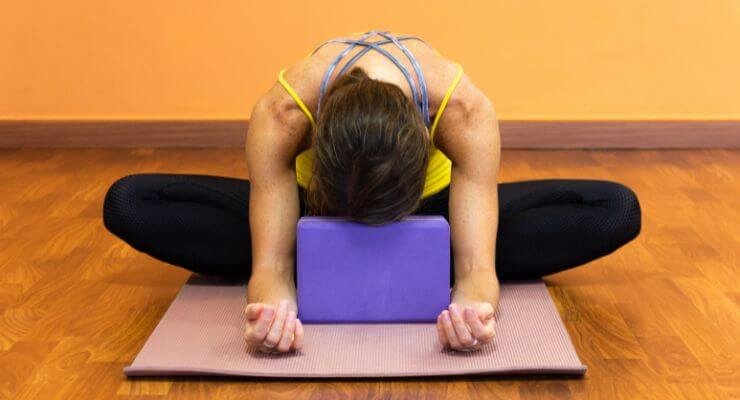Becoming a yoga instructor is a rewarding career path for those who have a passion for yoga and want to share their knowledge and experience with others. However, it takes more than just a love of yoga to become a successful teacher.
There are several steps that must be taken to become a certified yoga instructor, including completing a teacher training program and obtaining certification from a recognized organization.
One of the first steps to becoming a yoga instructor is to find a reputable teacher training program. These programs can vary in length and intensity, but typically require a commitment of at least a month to a year.
During this time, students will learn about yoga philosophy, anatomy, teaching methodology, and more. It is important to choose a program that is accredited by a recognized organization, such as Yoga Alliance, to ensure that the training meets certain standards.
After completing a teacher training program, aspiring yoga instructors must obtain certification from a recognized organization. Yoga Alliance is one of the most widely recognized organizations for yoga certification, and offers several levels of certification based on the number of training hours completed.
In addition to certification, yoga instructors must also have strong communication and leadership skills, as well as a thorough understanding of various yoga and meditation techniques. By following these steps, aspiring yoga instructors can build a successful career helping others find health and wellness through the practice of yoga.
The Importance of Personal Practice
Becoming a yoga instructor requires more than just completing a teacher training program. A key component of being a successful yoga teacher is to maintain a personal practice. Here are a few reasons why personal practice is important:
Establishing a Routine
Maintaining a consistent personal practice helps yoga instructors establish a routine and develop the discipline required to teach yoga classes. By committing to a regular practice, instructors can better understand the challenges their students may face in developing their own practice.
Exploring Different Styles and Traditions
Personal practice allows yoga instructors to explore different styles and traditions of yoga. This exploration can help instructors better understand the nuances of different styles and how they can be integrated into their teaching.
Cultivating a Strong Foundation in Asanas, Pranayama, and Meditation
Personal practice is crucial for developing a strong foundation in asanas, pranayama, and meditation. By regularly practicing these elements of yoga, instructors can deepen their understanding of the poses, breathwork, and mindfulness techniques they teach.
In summary, maintaining a personal practice is an essential part of becoming a successful yoga instructor. It helps instructors establish a routine, explore different styles and traditions, and cultivate a strong foundation in asanas, pranayama, and meditation.
Choosing a Yoga Teacher Training Program
Becoming a yoga instructor requires dedication, time, and effort. One of the most important decisions to make is choosing the right yoga teacher training program (YTT). Here are some factors to consider when choosing a YTT program.
Types of Certifications
There are different types of yoga teacher certifications, including the Registered Yoga Teacher (RYT). The RYT certification requires 200, 300 or 500 hours of training. It is essential to choose a program that provides the certification level you need.
Choosing the Right School
Choosing the right school is crucial when selecting a YTT program. Factors to consider include the school’s reputation, the quality of the program, and the teaching style. It is also essential to ensure that the program meets your specific needs and goals as a yoga teacher.
Online vs. In-person YTT options
Yoga teacher training programs are available both online and in-person. Online programs offer flexibility and convenience, while in-person programs provide hands-on training and a more immersive experience. Consider your schedule, learning style, and preference when choosing between online and in-person YTT options.
In conclusion, choosing the right yoga teacher training program is an essential step towards becoming a successful yoga instructor. Consider the certification level, the school’s reputation, and online vs. in-person options when making your decision. By selecting the right program, you will gain the knowledge and skills necessary to share the practice of yoga with others.
Financial and Time Investment
Becoming a yoga instructor requires a significant financial and time investment. In this section, we will discuss the financial and time commitments required to complete yoga teacher training (YTT).
Budgeting for YTT tuition and related expenses
The cost of YTT varies depending on the program, location, and duration. On average, the cost of a 200-hour YTT program ranges from $1500 to $5000 depending on the location and the school you choose. In addition to tuition, students may incur expenses such as textbooks, travel, and accommodation.
To budget for YTT, aspiring yoga instructors should research different programs and their associated costs. They should also consider their current financial situation and determine how much they can afford to spend on YTT. Some programs offer payment plans or scholarships, which can help reduce the financial burden.
Balancing YTT with your current job or responsibilities
YTT requires a significant time commitment, often taking several months to complete. Aspiring yoga instructors should consider how they will balance YTT with their current job or responsibilities.
Some YTT programs offer flexible schedules, allowing students to attend classes on weekends or evenings. However, students should still be prepared to dedicate a significant amount of time to YTT, including attending classes, completing assignments, and practicing yoga outside of class.
Scholarships and financial aid options
For those who cannot afford the cost of YTT, scholarships and financial aid options are available. Many YTT programs offer scholarships for students who demonstrate financial need or who come from underrepresented communities.
In addition, some organizations offer grants and financial assistance to aspiring yoga instructors. For example, the Yoga Alliance Foundation offers scholarships for individuals who want to become yoga teachers but cannot afford the cost of YTT.
Aspiring yoga instructors should research different scholarship and financial aid options and apply early to increase their chances of receiving assistance.
Overall, becoming a yoga instructor requires a significant financial and time investment. Aspiring yoga instructors should budget for YTT, balance YTT with their current job or responsibilities, and research scholarship and financial aid options to reduce the financial burden.
Completing the Training
Completing a yoga teacher training program with a Registered Yoga School (RYS) is the first step towards becoming a certified yoga instructor. The program typically involves a combination of coursework, practicum, and examinations.
Coursework
The coursework for a yoga teacher training program typically covers a range of topics, including:
- Yoga philosophy and history
- Anatomy and physiology
- Asanas (postures) and sequencing
- Pranayama (breathwork)
- Meditation
- Teaching methodology
- Ethics and professionalism
The number of hours required for coursework varies depending on the level of certification. For example, a 200-hour program typically requires around 180 hours of coursework.
Practicum
The practicum component of a yoga teacher training program involves hands-on teaching experience. This may include teaching practice classes, observing other teachers, and receiving feedback from instructors.
The number of hours required for practicum also varies depending on the level of certification. For example, a 200-hour program typically requires around 20 hours of practicum.
Examinations
The examinations for a yoga teacher training program typically include both written and practical components. Written exams may cover topics such as anatomy and philosophy, while practical exams may involve teaching a class or demonstrating specific postures.
The requirements for passing the examinations also vary depending on the level of certification. For example, a 200-hour program may require a minimum passing grade of 80% on both the written and practical exams.
Overall, completing a yoga teacher training program requires dedication, hard work, and a passion for yoga. However, the rewards of becoming a certified yoga instructor can be significant, both personally and professionally.
Post-Graduation Steps
After completing a yoga teacher training program, the next step for aspiring yoga instructors is to register as a yoga teacher, find a job, and continue their education.
Registering as a Yoga Teacher
To become a registered yoga teacher, individuals can register with Yoga Alliance, the largest nonprofit association representing the yoga community. Yoga Alliance offers various levels of registration, including Registered Yoga Teacher (RYT) 200, 300, and 500, which indicate the number of hours of yoga teacher training completed. To register, individuals must provide proof of completion of a yoga teacher training program and agree to uphold Yoga Alliance’s ethical and professional standards.
Finding a Job
After becoming a registered yoga teacher, the next step is to find a job. Yoga instructors can work in a variety of settings, including yoga studios, gyms, community centers, and schools. To find a job, individuals can network with other yoga instructors, attend yoga events and workshops, and search online job boards.
Continuing Education
Continuing education is an important aspect of being a yoga instructor. To maintain their registration with Yoga Alliance, registered yoga teachers must complete continuing education hours every three years. Continuing education can include workshops, trainings, and conferences on various yoga-related topics, such as anatomy, philosophy, and teaching methodology. Additionally, continuing education can help yoga instructors stay up-to-date on new trends and techniques in the field and improve their teaching skills.
In summary, after completing a yoga teacher training program, individuals can register as a yoga teacher with Yoga Alliance, find a job in a variety of settings, and continue their education through workshops, trainings, and conferences to maintain their registration and improve their teaching skills.
Building Your Yoga Teaching Career
Becoming a yoga instructor is a rewarding career path that requires dedication and commitment. Once you have completed your training, it’s time to start building your career as a yoga teacher. Here are some tips on how to get started.
Finding opportunities to teach yoga classes
One of the first steps to building a successful yoga teaching career is to find opportunities to teach. Start by creating a list of local yoga studios, gyms, and community centers that offer yoga classes. Reach out to them and inquire about any available teaching positions. You can also consider offering private classes to friends and family members to gain experience and build your reputation as a yoga instructor.
Marketing yourself as a yoga instructor
Marketing yourself as a yoga instructor is essential to building a successful career. Create a professional website that showcases your experience, qualifications, and teaching style. Consider offering a free introductory class to attract new students and build your client base. Utilize social media platforms like Instagram and Facebook to share your teaching schedule, class offerings, and testimonials from satisfied students.
Networking and connecting with the yoga community
Networking and connecting with the yoga community is crucial to building a successful career as a yoga instructor. Attend local yoga events and workshops to meet other instructors and students. Join online yoga communities and forums to share your knowledge and connect with other yoga professionals. Consider attending yoga teacher training retreats to expand your knowledge and connect with like-minded individuals.
By following these tips, you can start building a successful career as a yoga instructor. Remember to stay dedicated and committed to your practice, and always strive to improve your teaching skills and knowledge.
Overcoming Challenges and Obstacles
Becoming a yoga instructor comes with its own set of challenges and moments of self-doubt. It is important to embrace these challenges as opportunities for growth and learning. In this section, we will address common hurdles in the early stages of teaching, managing self-doubt and imposter syndrome, and navigating the ups and downs of a yoga teaching career.
Addressing common hurdles in the early stages of teaching
One of the challenges that new yoga instructors face is finding a consistent student base. It can be discouraging to teach to small groups or have low attendance in classes. However, it is important to remember that building a student base takes time and effort. In the early stages of teaching, it is essential to network, promote classes, and offer free or discounted classes to attract new students.
Another challenge for new yoga instructors is adapting to different teaching environments. Smaller spaces in community locations can sometimes have a different student base when compared to a larger studio in urban locations. It is important to be adaptable and flexible in teaching styles and approaches to cater to the needs of different students.
Managing self-doubt and imposter syndrome
Imposter syndrome is a common feeling among yoga instructors, especially in the early stages of teaching. It is the feeling that they are not qualified enough to teach their students. This fear can be paralyzing and can lead to feelings of inadequacy and self-doubt. It is important to remember that everyone starts somewhere, and it takes time and practice to become a skilled yoga instructor. One way to manage self-doubt is to seek support from fellow instructors, mentors, or a therapist. It is also helpful to focus on personal growth and development to improve teaching skills.
Navigating the ups and downs of a yoga teaching career
A yoga teaching career can be rewarding, but it also comes with its own set of challenges. One of the challenges is burnout, which can occur when teaching too many classes or not taking enough time for self-care. It is important to prioritize self-care practices such as meditation, yoga, or other forms of exercise, and to take breaks when necessary. Another challenge is dealing with difficult students or challenging situations in class. It is important to maintain a professional and calm demeanor, and to have a plan for handling difficult situations.
In conclusion, becoming a yoga instructor is a journey that comes with its own set of challenges and obstacles. However, with dedication, perseverance, and a growth mindset, these challenges can be overcome. By addressing common hurdles in the early stages of teaching, managing self-doubt and imposter syndrome, and navigating the ups and downs of a yoga teaching career, a yoga instructor can build a successful and fulfilling career in the field.
Frequently Asked Questions
What are the qualifications required to become a yoga instructor?
To become a yoga instructor, one must complete a yoga teacher training program. The minimum requirement for most programs is a high school diploma or equivalent. However, some programs may require prior yoga experience or a certain level of physical fitness. Additionally, many employers prefer instructors who are registered with Yoga Alliance.
How long does it take to become a certified yoga instructor?
The length of time it takes to become a certified yoga instructor varies depending on the program which is typically from 1 month to 1 year. The most common certification programs are 200-hour and 500-hour programs.
Is it possible to make a living as a yoga instructor?
Yes, it is possible to make a living as a yoga instructor. However, it can be challenging to make a full-time income solely from teaching yoga. Many instructors supplement their income with other jobs or by offering private lessons.
Where can I find in-person yoga teacher training in NYC?
There are many yoga teacher training programs in New York City. Some popular options include Laughing Lotus Yoga Center, YogaWorks, and Pure Yoga. Interested individuals can also search for programs on the Yoga Alliance website.
What are the best yoga teacher training programs in Brooklyn?
Brooklyn has several reputable yoga teacher training programs. Some of the best options include Abhaya Yoga, Brooklyn Yoga Project, and Sacred Arts Research Foundation. Interested individuals should research each program to determine which one best fits their needs.
How can I become a registered yoga teacher in the USA?
To become a registered yoga teacher in the USA, one must complete a yoga teacher training program that is registered with Yoga Alliance. After completing the program, individuals can apply for registration with Yoga Alliance by submitting their credentials and paying a fee.





